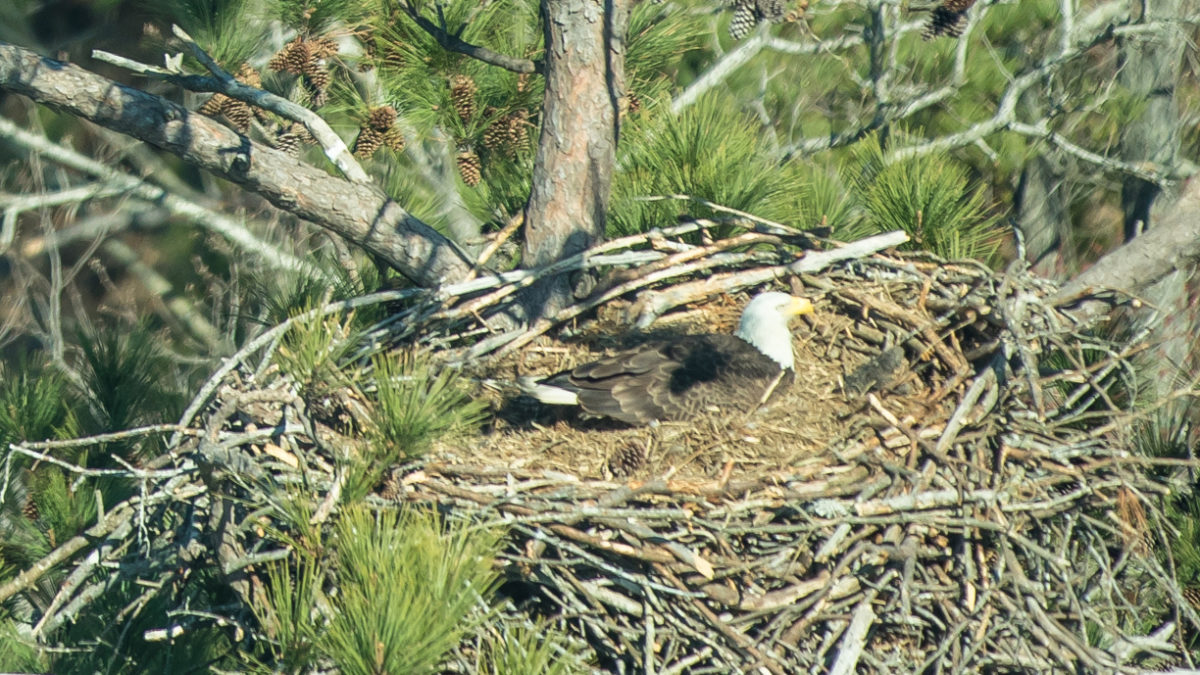James River eagle population continues to soar while productivity continues to fall

Ipswich Winter Ecology comes into Focus
April 4, 2020
Virginia woodpeckers have record production
July 6, 2020By: Bryan Watts
6/26/2020
Upper Chippokes Creek is where bald eagles first recolonized the James River after the peak of the DDT era. On 19 January 1979, Mitchell Byrd was flying a survey along the James and found a pair of adult eagles attending a newly constructed nest. He returned on 20 April to find the pair attending two young. This observation finally broke a five-year drought during which no eagles were known to nest on the James. The nest found by Mitchell was in the same tree as a nest found by Fred Scott in 1961. The 1961 nest replaced a previous nest in the territory that had been used since 1949. We do not know how far back through time the territory had been occupied.
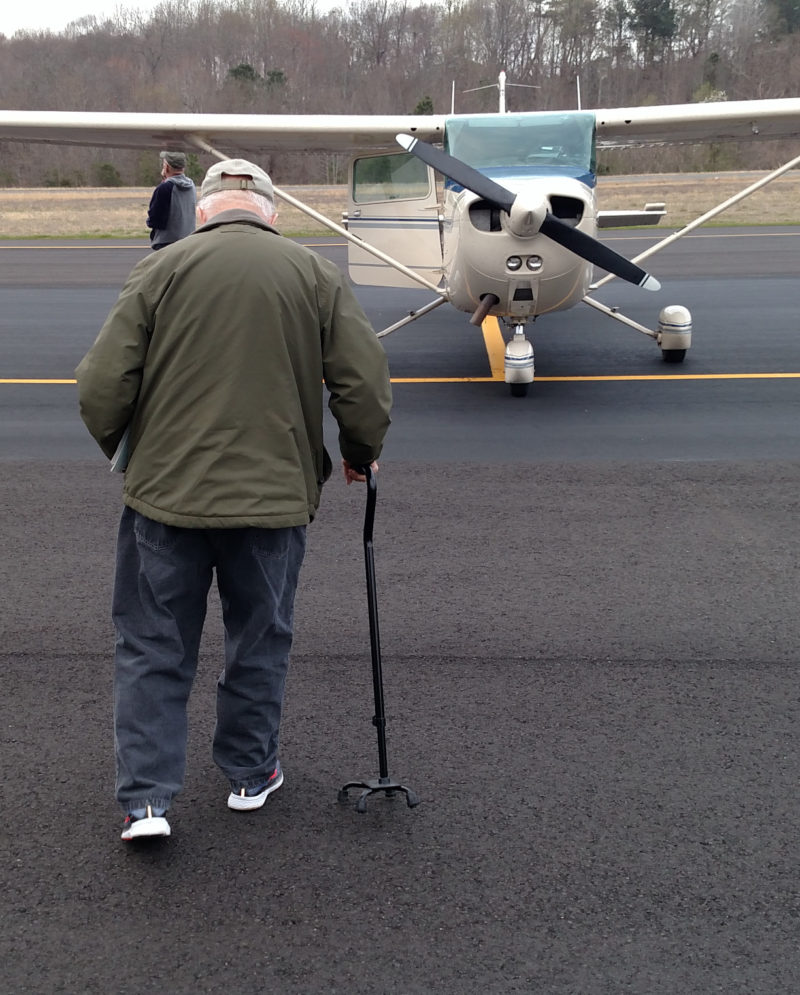
Much has changed on the James since the discovery of the single nest in 1979. I can remember in March of 1993 circling in astonishment above the Upper Chippokes territory as we mapped a new nest less than 100 meters distant – two females in nests on opposite sides of a small clear cut, incubating and facing directly toward each other eyeball to eyeball. We were blown away that the birds would tolerate each other over such a close distance. Long-held dogma suggested that eagle pairs required one kilometer of shoreline and would defend the space from all trespassers, but the two neighbors were a sign of things to come. A surprising percentage of pairs along the river now nest within 100 meters of neighbors. Upper Chippokes Creek now supports ten breeding pairs. Other prominent landmarks along the river support amazing densities of nesting pairs including Jamestown Island (9 pairs), Weyanoke Point (10 pairs), Hog Island (8 pairs) and Mulberry Island (10 pairs).
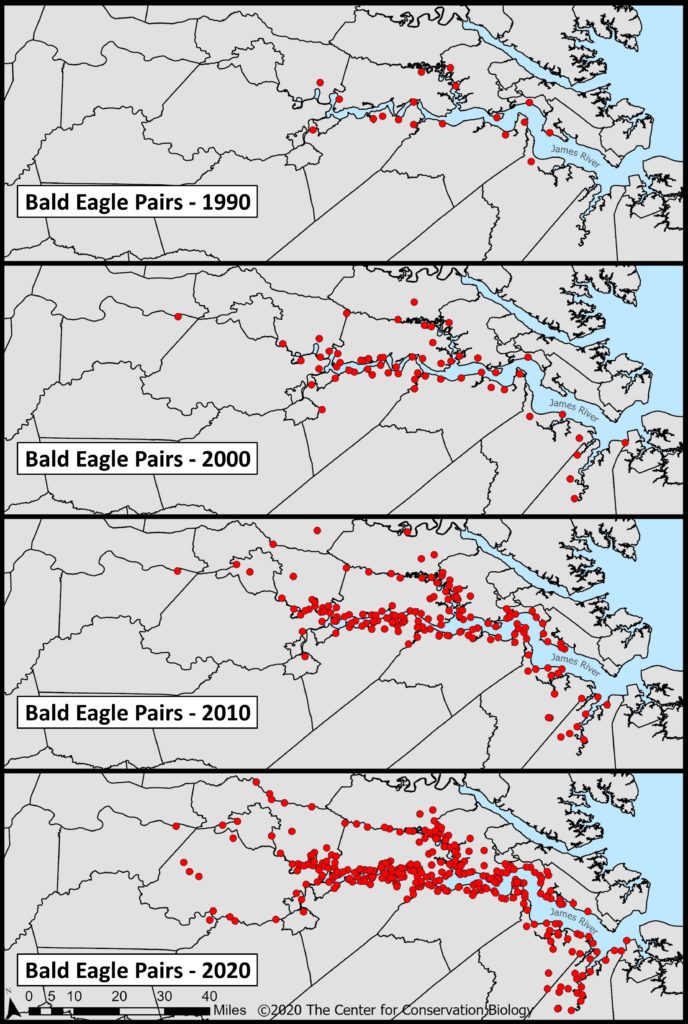
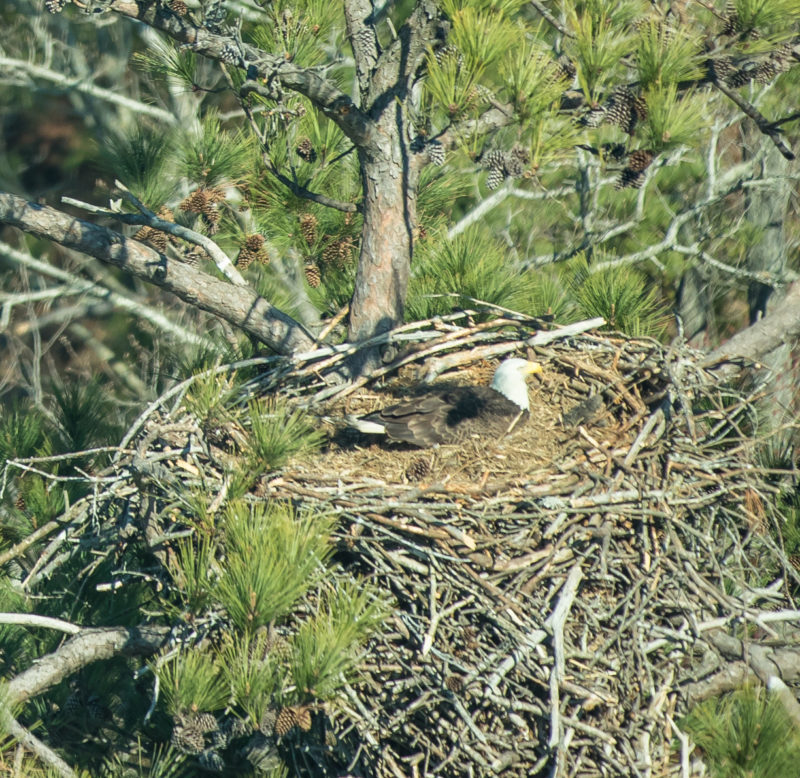
The 2020 bald eagle survey of the James River documented 319 occupied breeding territories. In just 41 years the population has grown from the single pair on Upper Chippokes Creek to 319 pairs. The annual eagle nest surveys have shifted from leisurely flights floating along the river to three days of intense surveys attempting to keep up with the long list of nest codes. Eagles fill the airspace and have once again become the dominant raptor along the river during the March period. The survey requires a skilled and vigilant pilot to dodge all the eagles in the air. The recovery is a testament to how resilient the estuary can be given the opportunity.
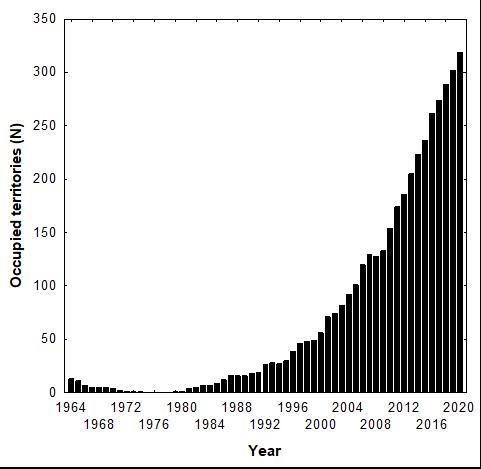
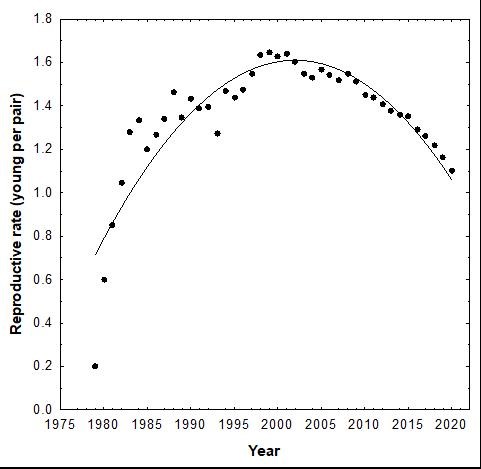
Since 1979, the Upper Chippokes Creek territory has been occupied annually and is still going strong. The territory has produced 56 young since re-establishment in 1979. In 2020, the current residents produced a single young eaglet. This level of production has become the norm over the past decade. Between 1985 and 2005 this territory raised an average of 1.5 young per year. Since 2005, the pair has produced an average of 0.8 young per year and has not produced a single two-chick brood. This pattern mirrors what has been recorded along the entire river. Productivity along the James River peaked during the late 1990s and early 2000s and has declined consistently since that time. The 2020 survey documented 229 eaglets along the James resulting in a per capita rate of 1.05. Eagle productivity has dropped as the population has grown and breeding density has increased. However, the mechanism causing the decline does not appear to be traditional resource competition where pairs scramble for their share of a limited fish. Rather, the mechanism appears to be young marauding eagles that are disrupting territory holders and competing for a limited set of viable breeding territories. We expect productivity to continue this decline until the number of young produced are more in balance with the number of breeding slots that become vacant through adult mortality.

